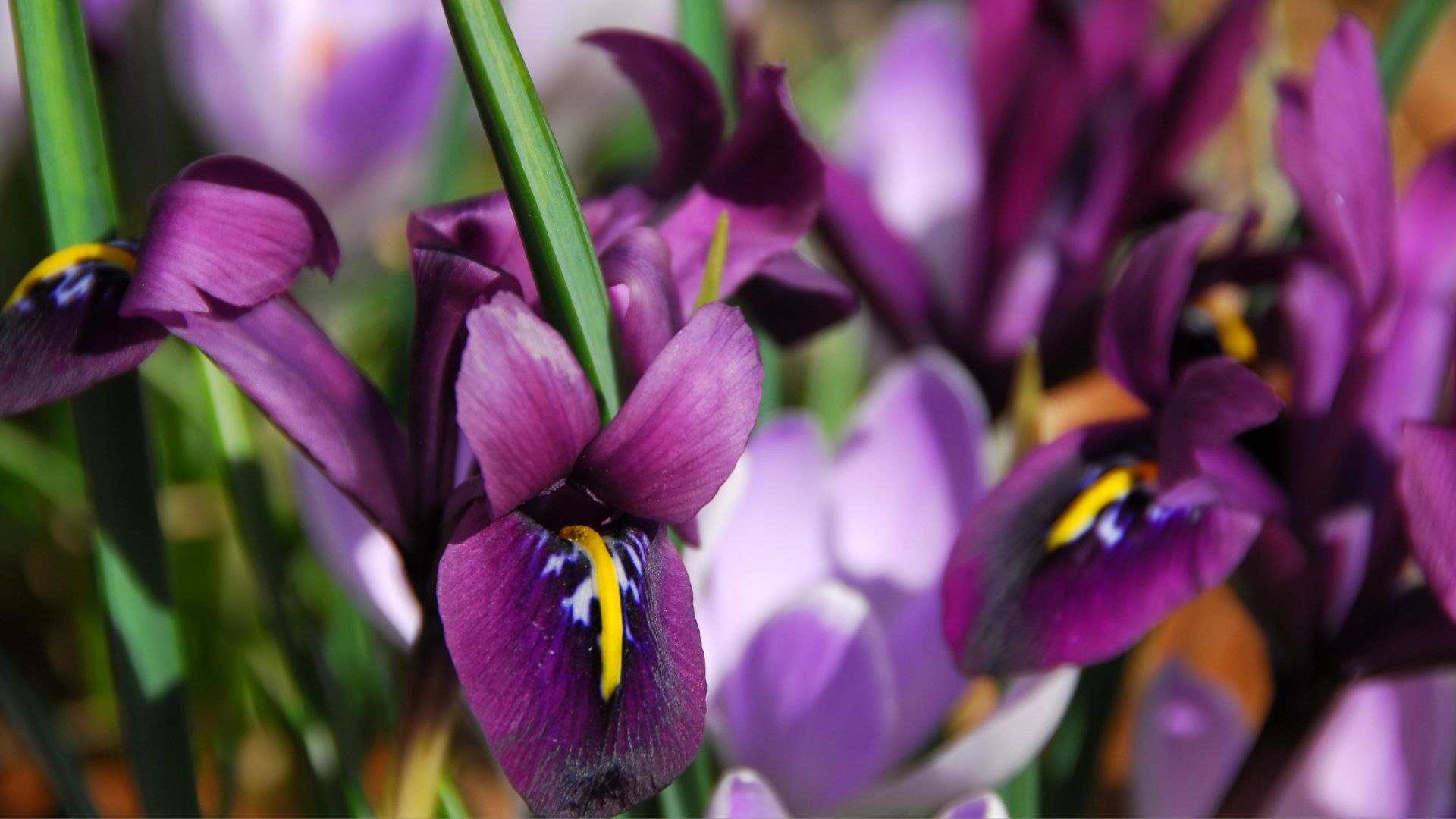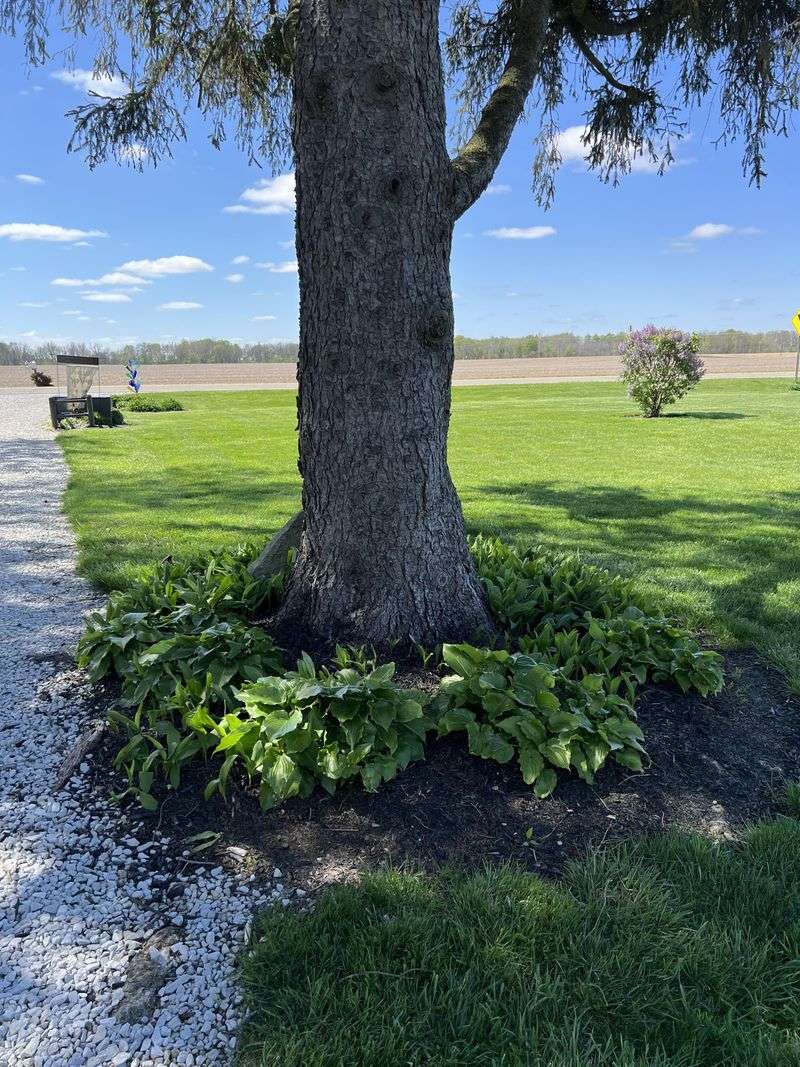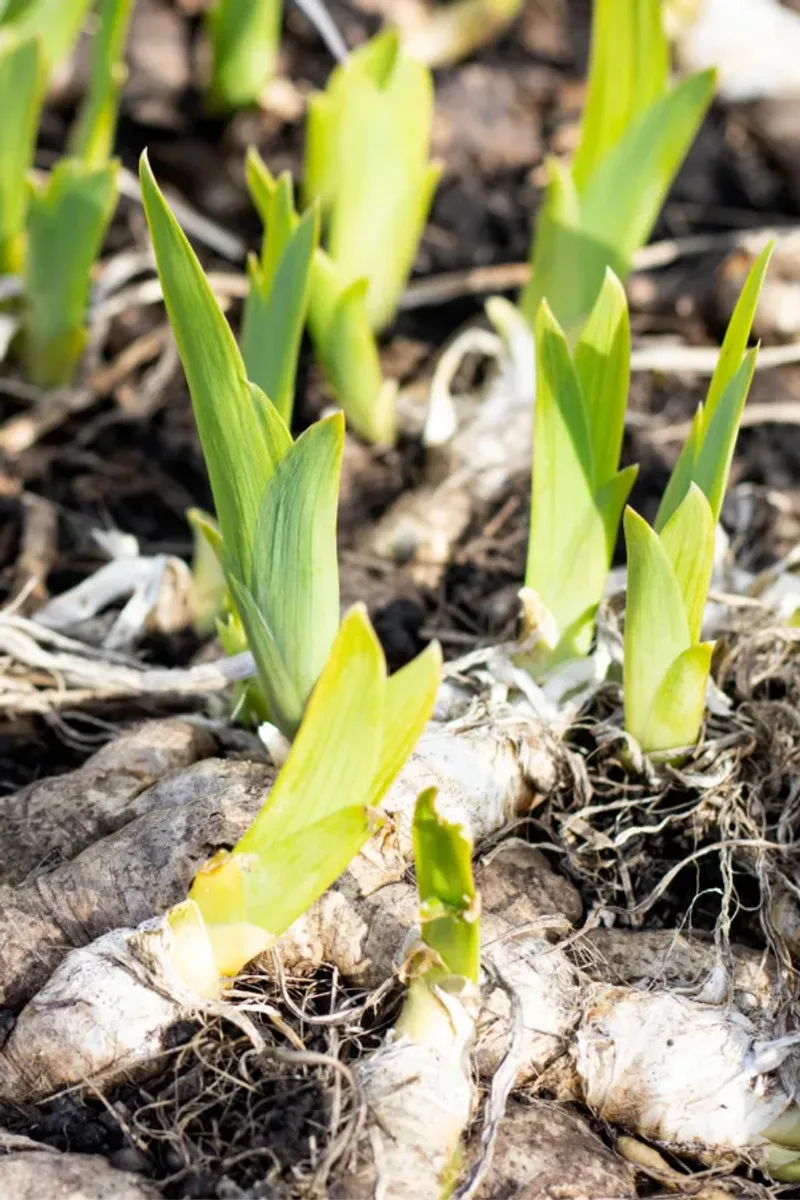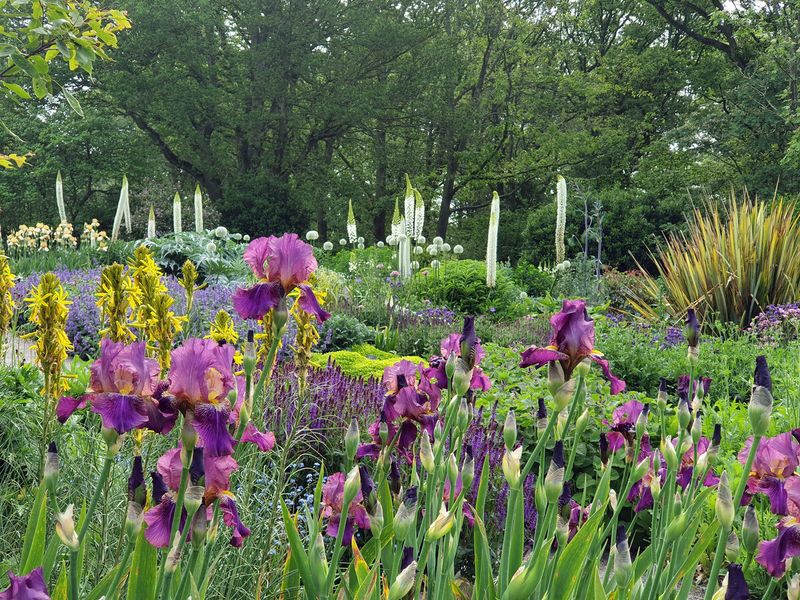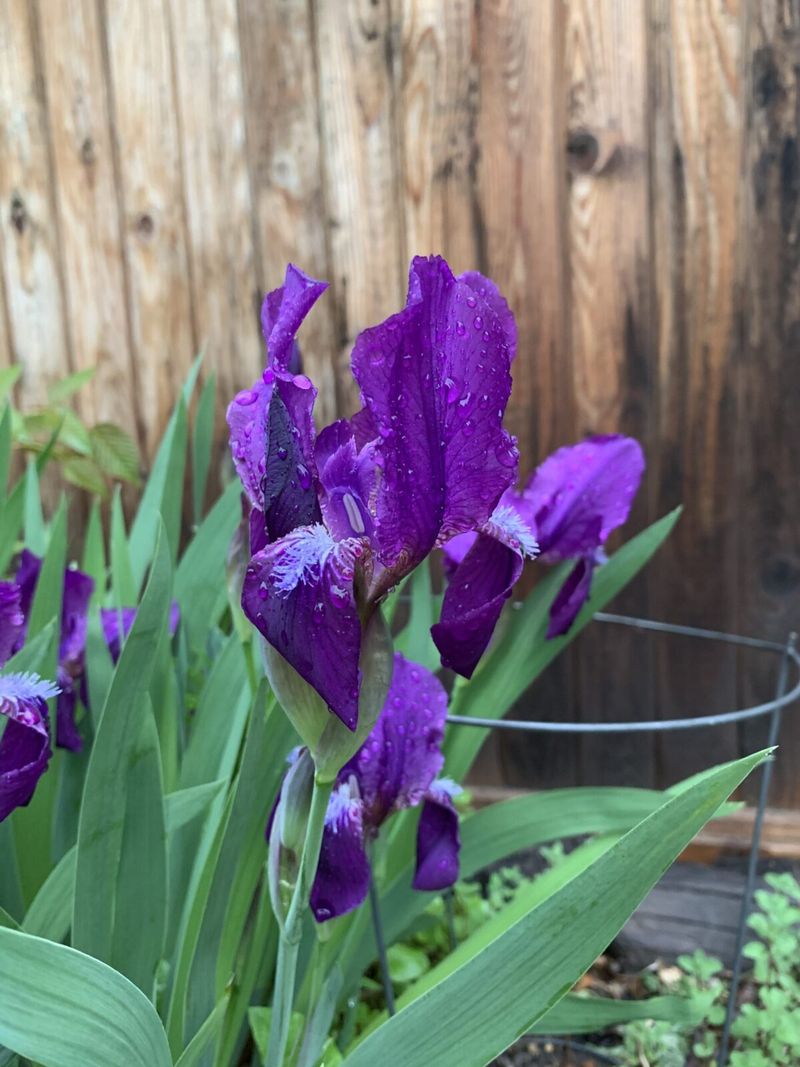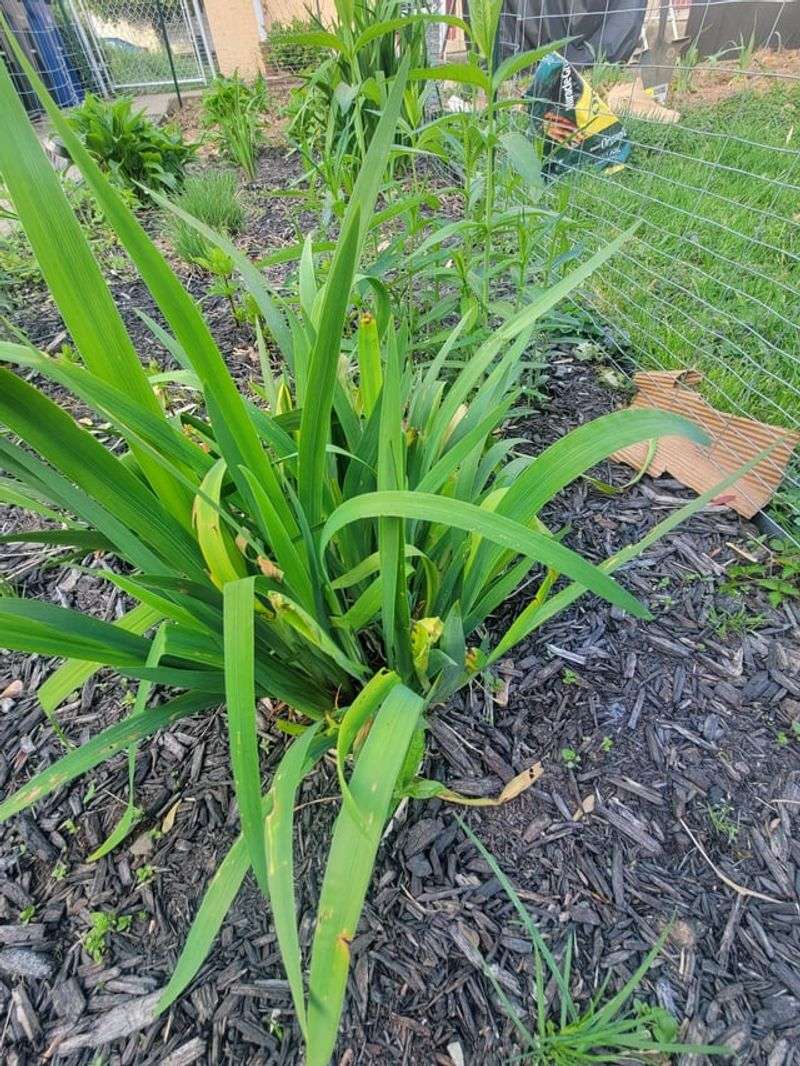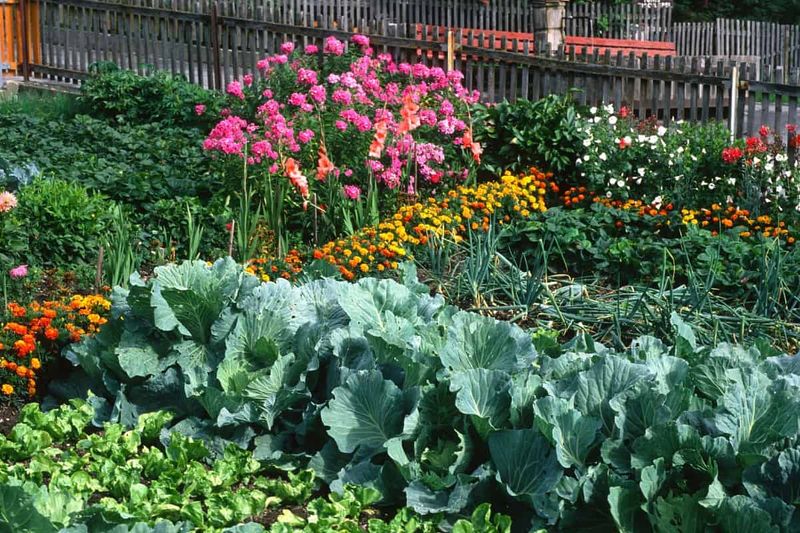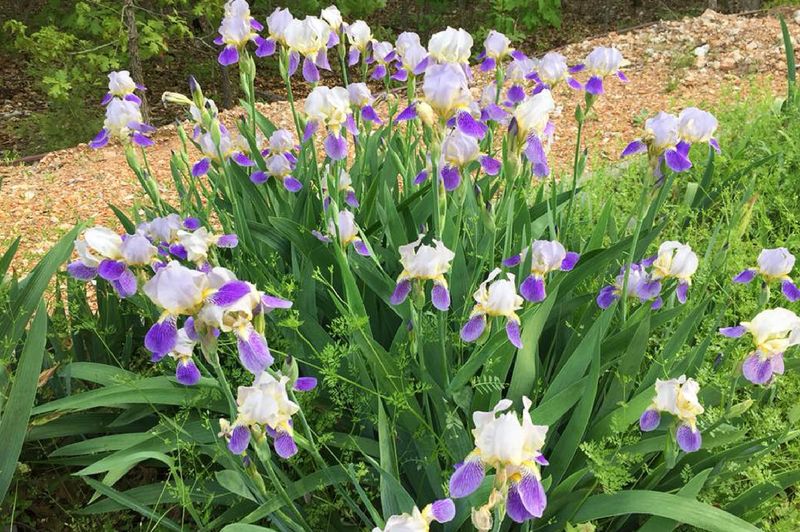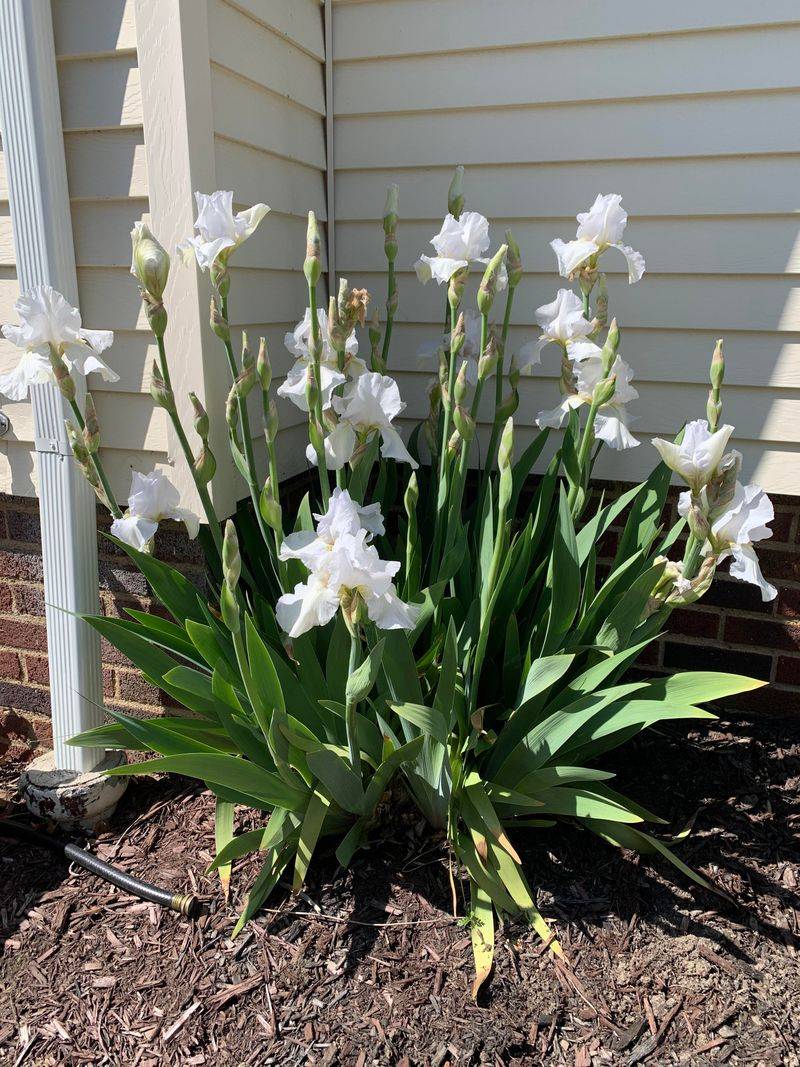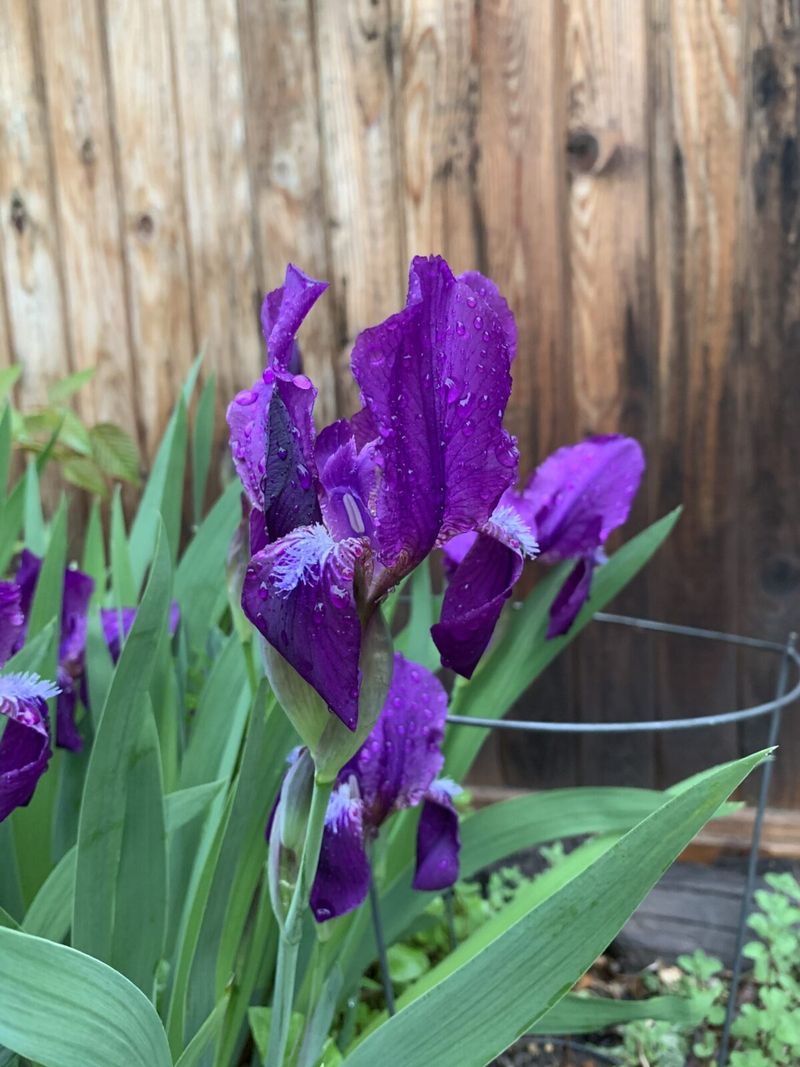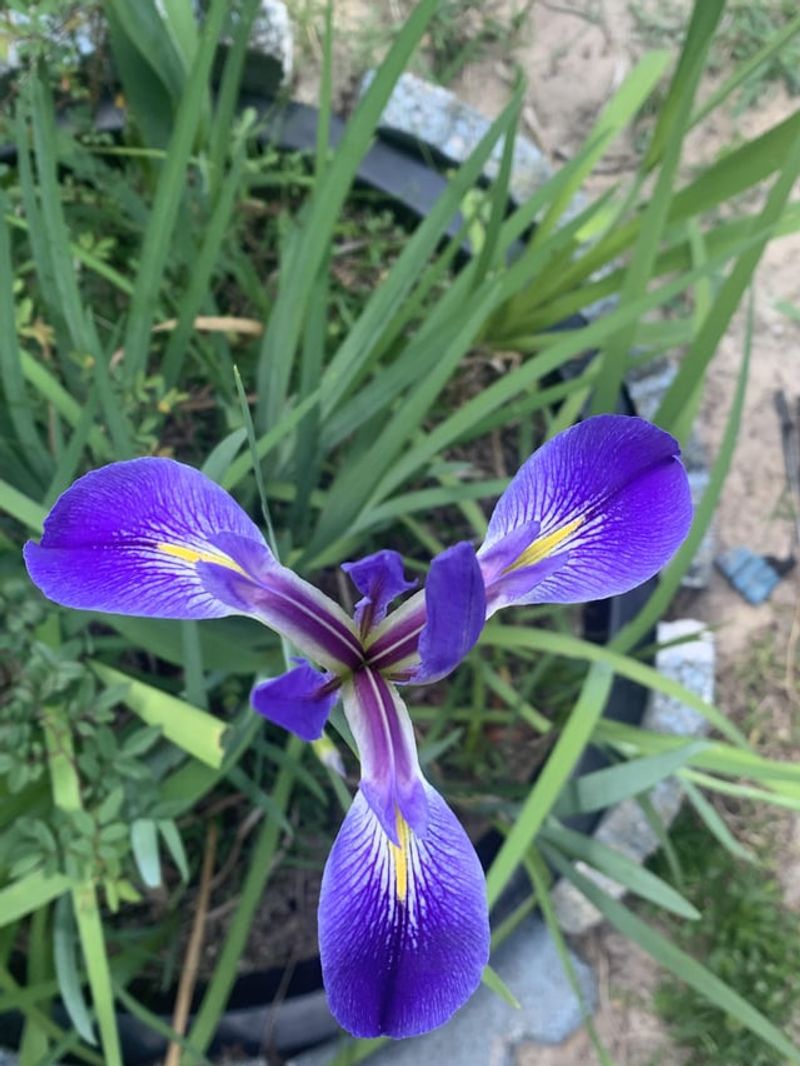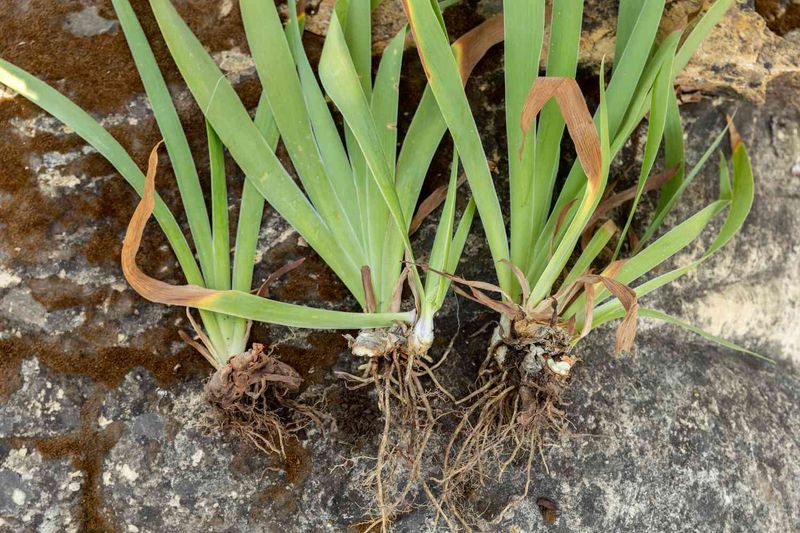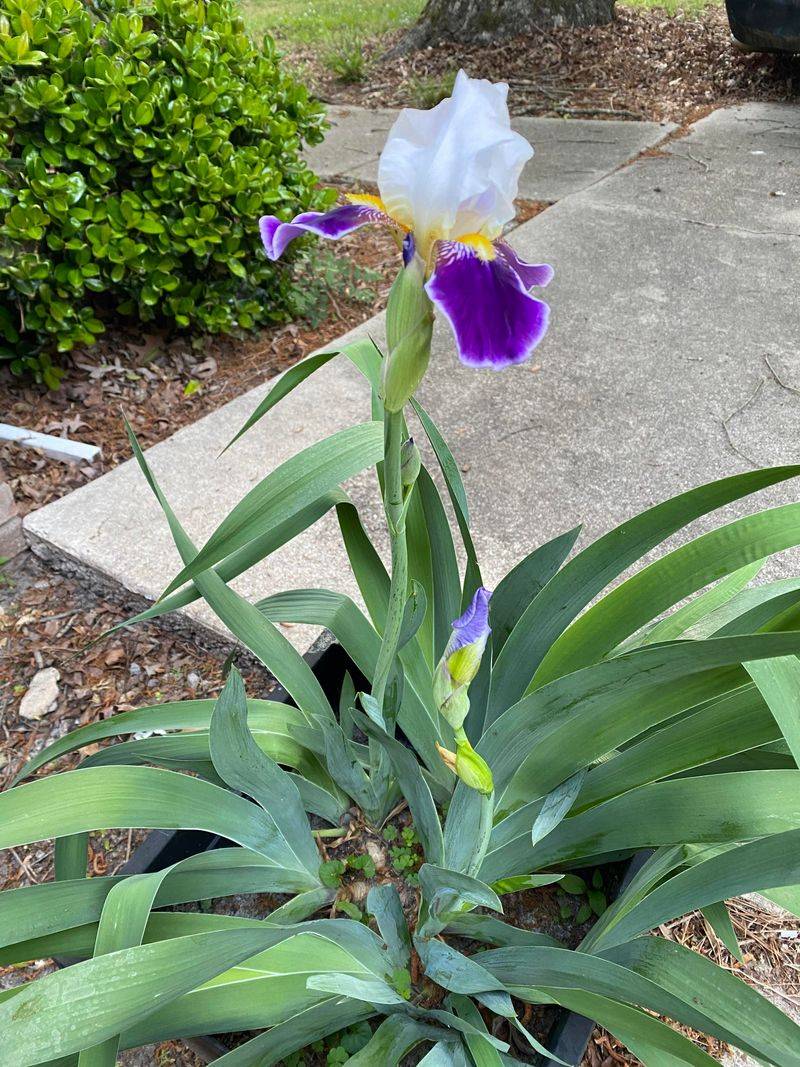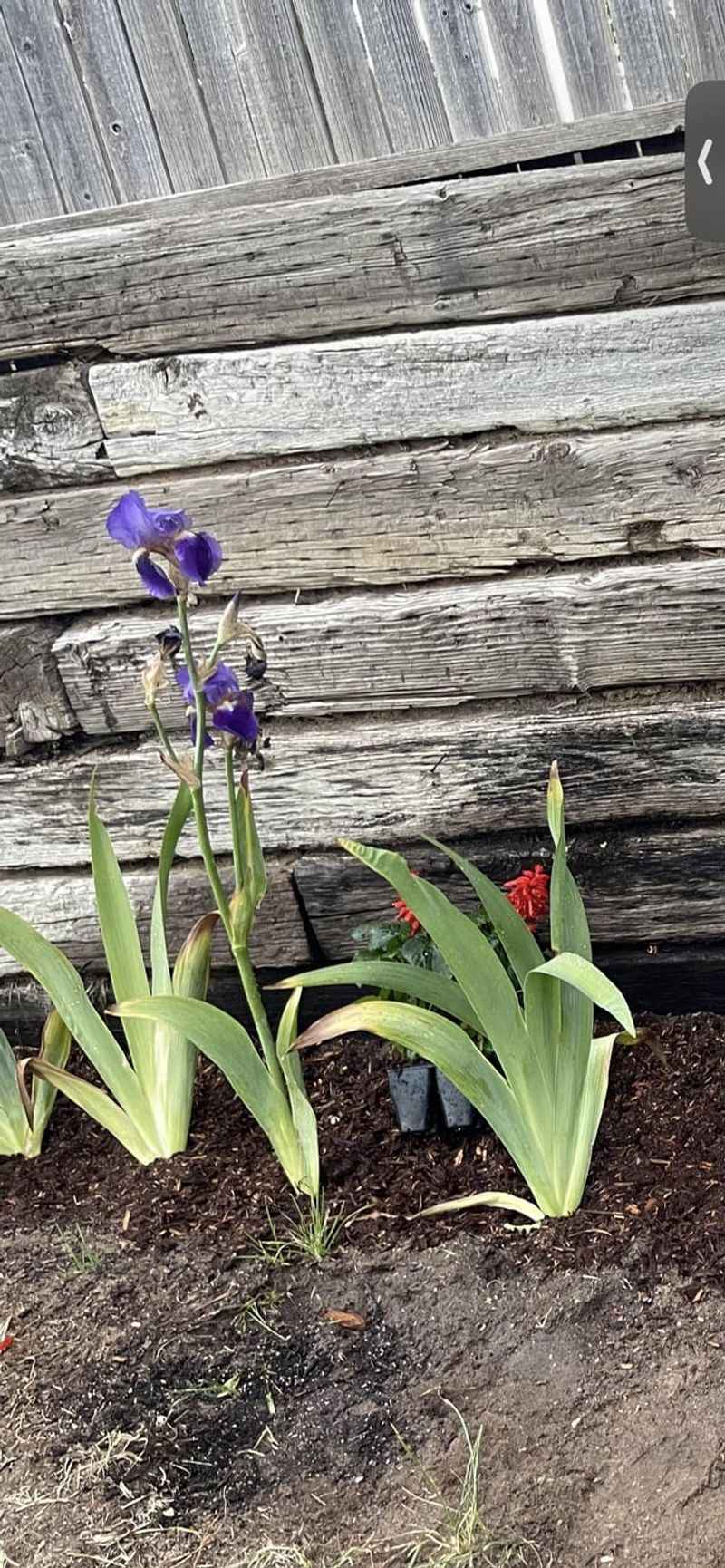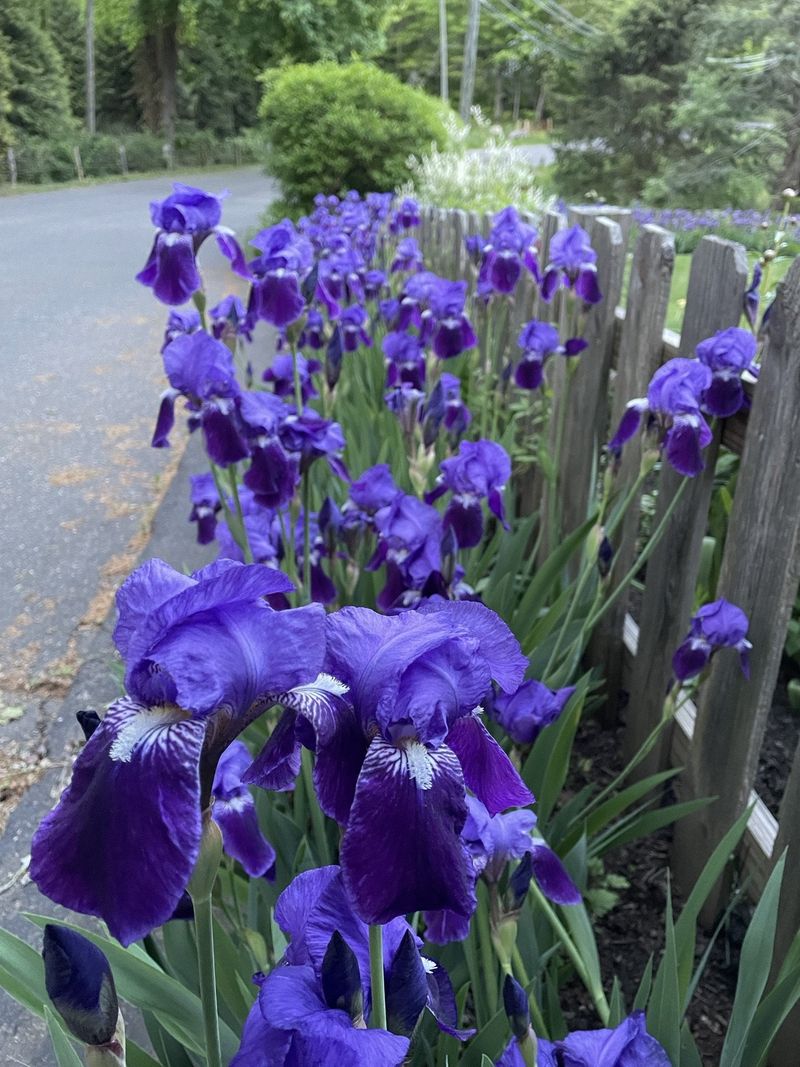I learned the hard way that irises aren’t as carefree as they first appear. After watching several clumps struggle in my backyard, I realized these elegant flowers have strong opinions about where they’ll perform their best.
My neighbor’s stunning iris display had me wondering what I was doing wrong. The secret wasn’t fancy fertilizers or special watering techniques – it was simply location, location, location.
While irises bring spectacular color to gardens, planting them in the wrong spot can lead to disappointment instead of blooms. Understanding where not to plant these beauties is just as important as knowing their basic care requirements.
1. Deep Shade Under Trees
Irises crave sunshine to produce their showy blooms. Under tree canopies, they’ll grow leggy and produce few, if any, flowers. I tried planting some beneath my maple tree and ended up with sad, stretched plants that never bloomed.
A better alternative is to place them along the outer edge of tree shade where they’ll receive at least 6 hours of sunlight. Or choose shade-loving perennials like hostas or astilbe for those darker spots.
Japanese forest grass or heuchera will thrive where irises struggle, creating texture and color without demanding the sun irises desperately need.
2. Soggy, Poorly-Drained Soil
Wet feet spell disaster for most iris varieties. My first iris bed was in a low spot of the yard where water collected after rain. The rhizomes rotted quickly, turning mushy and smelly by mid-summer.
Instead, plant irises in well-drained soil on slight slopes or raised beds where water moves away from the roots. For those persistently damp areas, try moisture-loving plants like cardinal flower or swamp milkweed.
Japanese iris is the exception to the rule – it’s one of the few iris types that actually enjoys wet conditions, making it perfect for pond edges or rain gardens.
3. Crowded Perennial Beds
Irises need elbow room to thrive. In my cottage garden, I crammed irises between daylilies and coneflowers, and they gradually disappeared as more aggressive plants overshadowed them. The competition for nutrients and space left them unable to establish properly.
Give irises their own dedicated space with at least 12-18 inches between plants. If you’re determined to mix them with other perennials, choose well-behaved, clump-forming companions like small ornamental grasses or compact varieties of salvia.
Shorter perennials that won’t overshadow the iris foliage make ideal neighbors – try catmint or compact varieties of coreopsis.
4. North-Facing Walls
The north side of buildings creates cold, dark microclimates where irises simply sulk. My attempt to brighten a north-facing foundation border with bearded irises resulted in spindly growth and zero flowers.
Redirect your iris planting to south or west-facing areas where they’ll bask in ample sunlight. For those problematic north walls, embrace shade-lovers like ferns, bleeding hearts, or hellebores that actually prefer protection from intense sun.
Astilbe and tiarella create beautiful, textural displays in these cooler spots, offering delicate flowers where irises would fail to perform.
5. Heavy Clay Soil
Clay soil becomes a suffocating prison for iris rhizomes. When I planted my first batch of irises in our heavy clay backyard, they barely survived one season before declining dramatically. The dense soil prevented proper root development and trapped too much moisture around the rhizomes.
Amend clay soil heavily with compost and coarse sand before planting, or better yet, create raised beds with fresh, well-draining soil mix. In areas with stubborn clay, consider growing irises in large containers instead.
Alternatively, native prairie plants like butterfly weed or black-eyed Susans have evolved to handle clay soil challenges that irises cannot overcome.
6. Areas With Poor Air Circulation
Tucked between tall shrubs and a fence, my irises developed leaf spot and rot issues within weeks. The stagnant air created perfect conditions for fungal problems that quickly spread through the entire planting.
Plant irises where air moves freely around the foliage, allowing leaves to dry quickly after rain or morning dew. Avoid corners, tight spaces between structures, or areas surrounded by dense vegetation.
For those problematic spots with poor airflow, ornamental grasses like feather reed grass or switchgrass prove more resilient, their slender leaves allowing air movement even in confined spaces.
7. Vegetable Gardens
Mixing irises with vegetables creates headaches for both plants. The frequent watering and fertilizing that tomatoes and squash demand will cause iris rhizomes to rot. I learned this lesson after incorporating a few iris divisions into my raised vegetable beds.
Keep irises in ornamental borders where their specific needs can be met without compromising food production. The vegetables will benefit from the dedicated care, while your irises will thrive in drier conditions.
If you want flowering plants among your vegetables, annual marigolds or nasturtiums make better companions, offering pest-deterrent properties while tolerating the moisture vegetables need.
8. Lawn Edges That Get Mowed
Planting irises along lawn borders invites accidental damage from mowers and trimmers. The fan-shaped foliage gets shredded, and rhizomes can be damaged by equipment. My border irises looked increasingly ragged as the season progressed due to weekly mowing mishaps.
Create a distinct separation between lawn and iris beds using edging materials like stone, brick, or metal. Alternatively, place irises in island beds away from turf grass entirely.
For lawn edges, consider more resilient plants like daylilies or ornamental sedges that can better withstand occasional contact with lawn equipment while still providing attractive borders.
9. Under Roof Drip Lines
The area where water pours off roofs creates extreme conditions – bone dry between rains, then suddenly flooded during storms. My irises planted near the garage suffered this feast-or-famine moisture pattern and quickly deteriorated.
Position irises at least 3-4 feet away from building drip lines, where soil moisture stays more consistent. For those troublesome drip line areas, install rain barrels to capture water, or create gravel drainage areas.
Sedums and other succulents handle these challenging spots beautifully, their drought-tolerance and ability to withstand occasional downpours making them perfect alternatives where irises would struggle.
10. Areas With Aggressive Spreading Plants
I once planted irises near some innocent-looking mint, only to watch the mint completely overrun them within a single season. Aggressive spreaders like mint, bishop’s weed, or certain ornamental grasses will quickly choke out irises, which spread slowly by comparison.
Keep irises away from plants that spread by underground runners. If you must have these aggressive plants in your garden, contain them in buried pots or with root barriers.
Better companions include well-behaved perennials like coral bells, salvia, or balloon flowers that stay where you plant them and won’t compete aggressively for the same space.
11. Hot, Reflected Heat Zones
Against south-facing walls or next to driveways, the intensified heat can scorch iris foliage and stress the plants. My irises planted beside our brick patio baked in the reflected heat, with leaf tips browning by early summer despite regular watering.
Plant heat-loving perennials like lavender, Russian sage, or blanket flower in these hot spots instead. They’ll thrive where irises struggle, creating beautiful displays without constant care.
If you’re determined to grow irises in warm areas, provide afternoon shade with taller plants nearby or choose heat-tolerant varieties like Spuria irises that handle higher temperatures better than their bearded cousins.
12. Freshly Mulched Areas
Piling mulch around iris rhizomes is asking for trouble. One spring I generously mulched my entire perennial bed, covering the iris rhizomes in the process. By mid-summer, they were rotting from the constant moisture trapped by the mulch.
Irises need their rhizomes exposed to air and sunlight – they actually prefer to be slightly elevated above soil level. If you must mulch near irises, keep it several inches away from the rhizomes.
For areas where deep mulch is desired for weed suppression, choose plants like daylilies or ornamental grasses that benefit from the moisture retention and don’t mind being buried.
13. Containers Without Drainage
Decorative pots without drainage holes become death traps for irises. I tried growing dwarf irises in beautiful ceramic containers without holes, using a layer of gravel at the bottom. Despite my careful watering, they rotted within weeks as water had nowhere to escape.
Always use containers with multiple drainage holes for irises. Better yet, choose self-watering containers with reservoirs that keep moisture away from the rhizomes while providing it to the roots.
If you love those decorative pots, fill them with plants that tolerate wet conditions, like papyrus or certain ferns, and save your irises for well-draining situations.
14. Recently Disturbed Soil
Newly worked soil from construction or landscaping projects settles significantly over time. My irises planted in freshly graded soil ended up much deeper than intended as the ground settled, causing poor blooming and eventual decline.
Allow newly disturbed areas to settle for at least a season before planting irises. Alternatively, create raised beds with established soil that won’t sink over time.
For immediate planting in disturbed areas, choose deep-rooted plants like baptisia or butterfly weed that can adjust to changing soil levels as settlement occurs, then add irises in future seasons once the ground has stabilized.
15. Areas With Heavy Foot Traffic
Planting irises along walkways or near play areas invites trouble. The brittle fans of foliage break easily when bumped, and the exposed rhizomes can be damaged by passing feet. My pathway irises looked increasingly battered as summer progressed, with broken leaves and trampled flowers.
Reserve irises for viewing areas that don’t invite cutting through or playing nearby. For high-traffic spots, tough plants like creeping thyme, sedums, or even certain ornamental grasses stand up better to occasional stepping and activity.
Low-growing junipers or hardy geraniums make excellent pathway plantings that can withstand the occasional misstep while still providing attractive borders.

